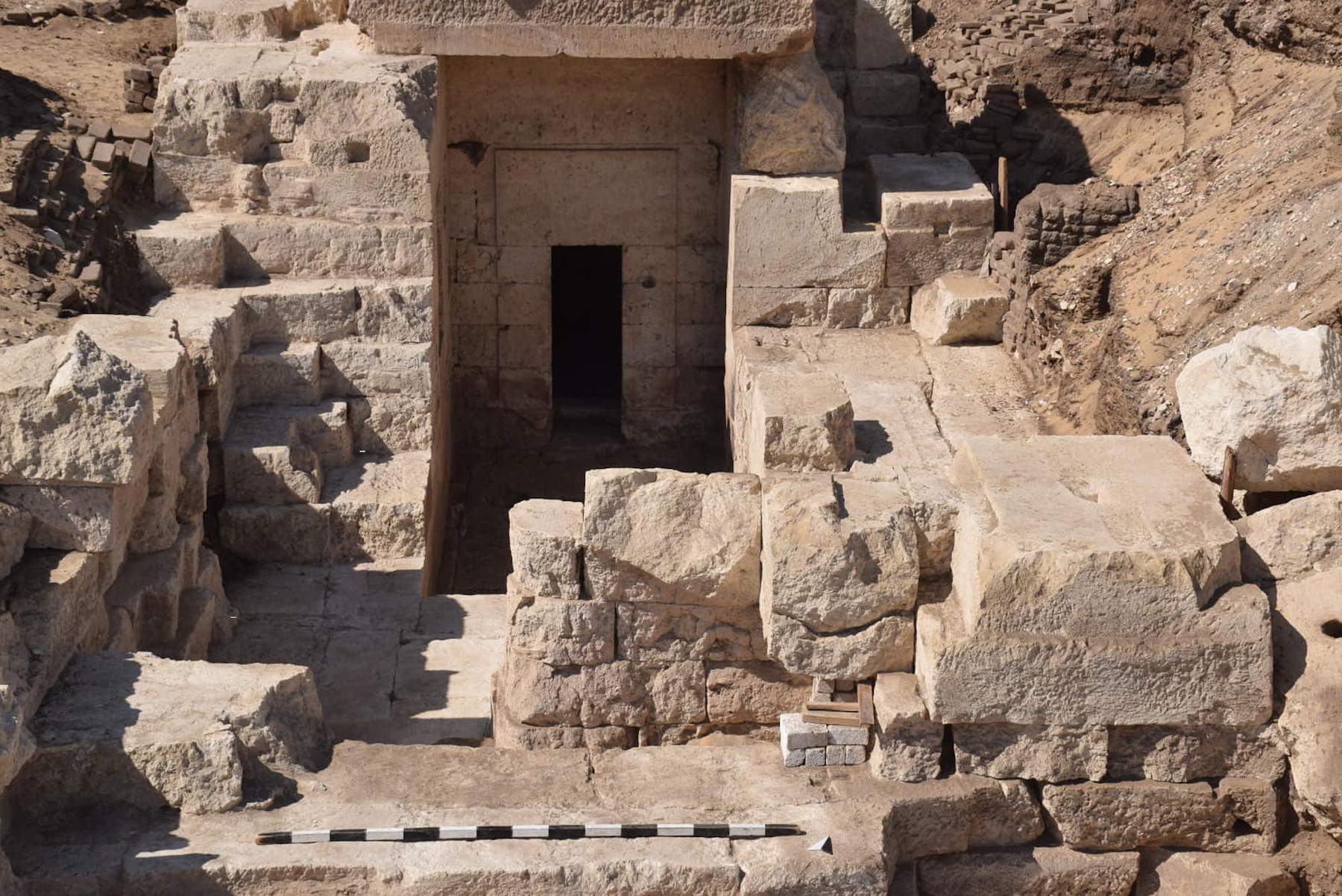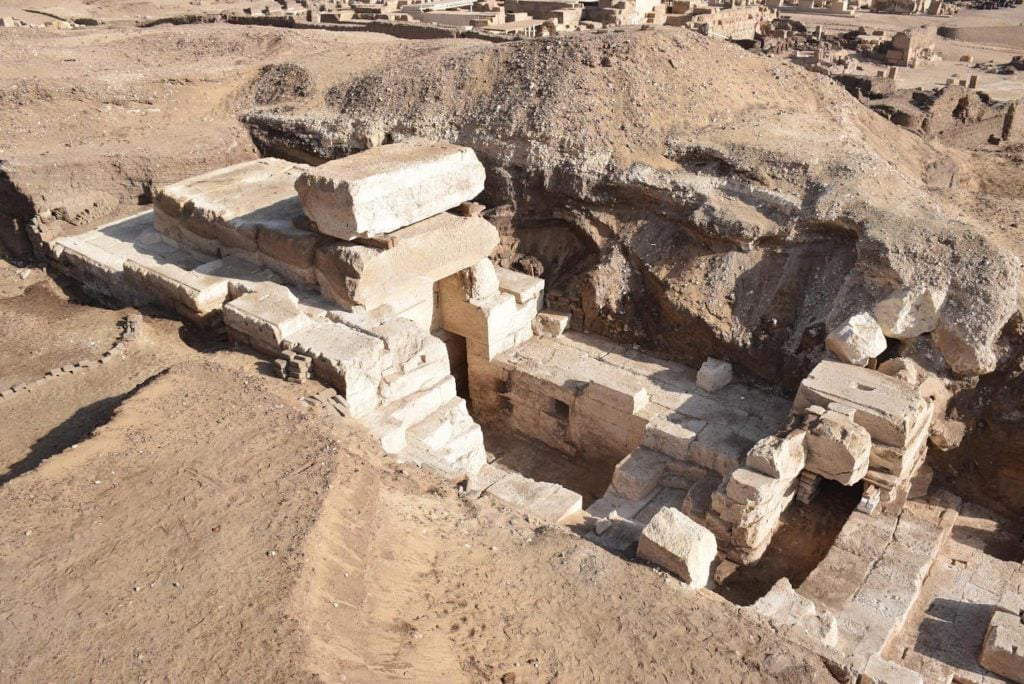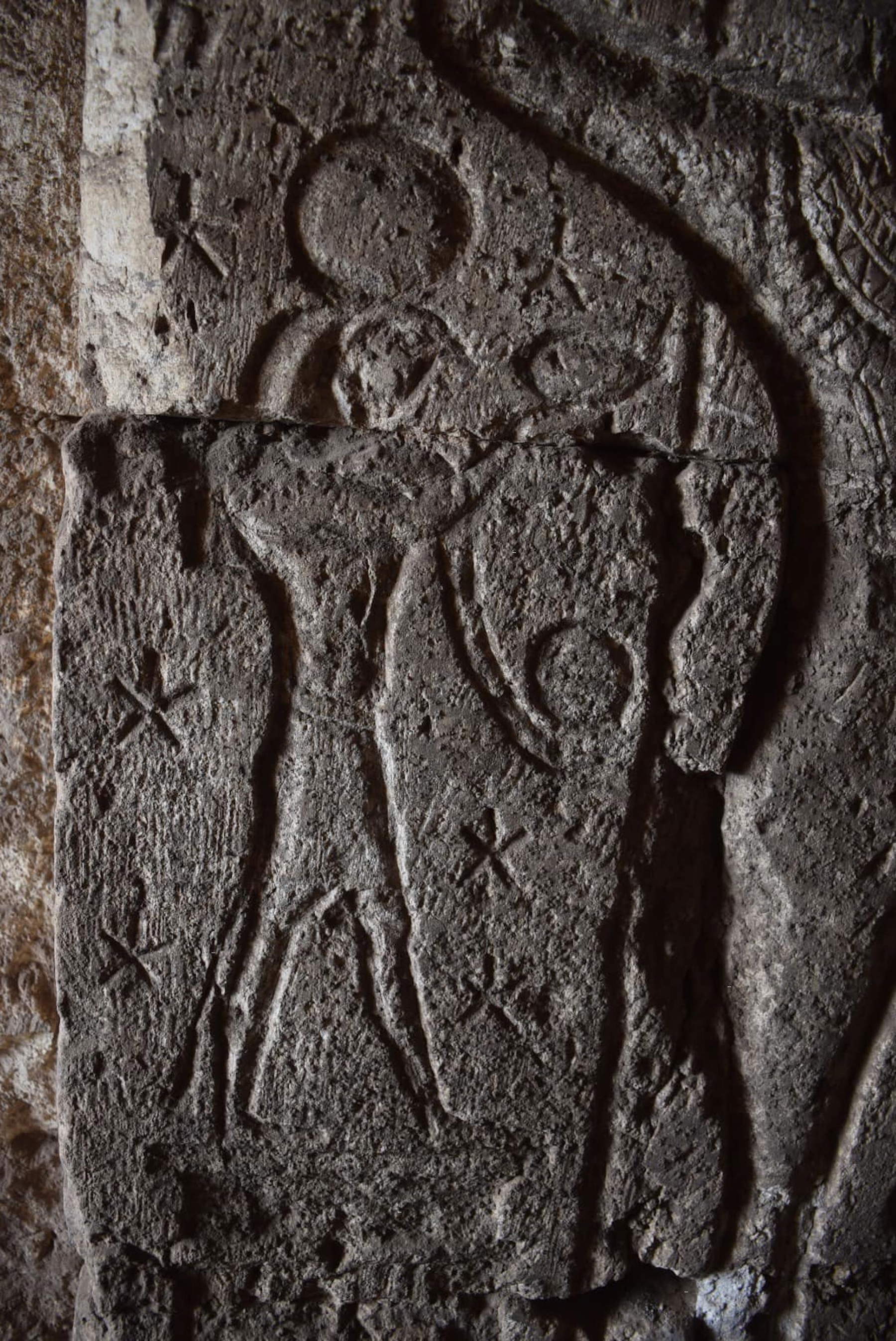Egypt, monumental entrance to an ancient Ptolemaic temple discovered
In Egypt, at Athribis, a village near Sohag, not far from Cairo, archaeologists from theUniversity of Tübingen and the Egyptian Ministry of Tourism and Antiquities have made an exceptional discovery: excavations have in fact uncovered the entrance to a monumental Ptolemaic temple, and a rock sanctuary is suspected still hidden behind piles of rubble.
The structure, dated to the 2nd century B.C., has a main entrance flanked by two imposing towers. The complex was built between 144 B.C. and 138 A.D., at a time of flourishing building and religious activity. The scale of the discovery is such that work, which began in 2012, has focused not only on exploring the temple but also on trying to identify a possible shrine hidden in the rock.

A long-term archaeological project
Since 2022, the Tübingen team, led by Professor Christian Leitz and excavation manager Marcus Müller, has worked alongside Mohamed Abdelbadia of the Egyptian Antiquities Authority. The excavations at Athribis, which began more than a decade ago, are funded by the German Research Foundation and are part of a larger archaeological survey project on the temple district, which covers an area of 30 hectares.
The monumental temple is 51 meters wide, and originally the towers reached 18 meters in height. Today, only five meters remain, as much of the material has been reused as quarry stone, an operation dated to 752 AD thanks to the discovery of a coin.
Archaeologists have excavated the northern tower and entrance gate, uncovering extraordinary reliefs. These include depictions of Ptolemy VIII, a second-century BCE king, offering sacrifices to the lion-headed goddess Repit and her son Kolanthes. Hieroglyphic inscriptions indicate that it was Ptolemy VIII who commissioned the decoration and construction of the pillar.
In the north tower, an unknown chamber was discovered, about six meters long and three meters wide, initially used to store tools and later to store amphorae. The ceiling of the room was freed of a huge stone block weighing about 20 tons, which was removed using advanced techniques involving air cushions, wooden scaffolding and rollers.
A corridor connects the room to the main entrance, thus making it accessible from the outside. The entrance is decorated with reliefs depicting the goddess Repit and the god Min, accompanied by rare decans - star figures with hawk and ibis heads, used to measure time during the night. Min was the male fertility god, and it is probably to him that the temple was dedicated.

Unique architecture and new mysteries
A unique element in the structure of the temple entrance is a second door on the facade, leading to a staircase. This staircase, consisting of at least four flights, gave access to the now-destroyed upper floor, where additional storage rooms are speculated to have been located.
Archaeologists are now focusing their efforts on finding the alleged rock sanctuary. According to Professor Leitz, the presence of finely worked limestone blocks on a vertically cut rock wall could indicate the entrance to an ancient sanctuary. The decorations found, including a cobra frieze, confirm the importance of the site and suggest that the gateway to the shrine may still be hidden behind the rubble.

An archaeological site rich in history
The Athribis site hosts not only the temple complex but also settlements, necropolis, and ancient quarries. Although archaeological investigations began over a century ago, much of the area remains to be excavated.
The current project is the heir to explorations conducted by Flinders Petrie in 1907-1908 and later by the Egyptian Antiquities Organization between 1981 and 1997. Despite the progress, one-third of the temple of Ptolemy XII, the main structure of the complex, was still buried when the University of Tübingen began excavations.
This temple, built between 81 B.C. and 138 A.D., was decorated over the course of more than two centuries, with contributions from Ptolemy XII and later Roman emperors such as Tiberius, Claudius and Hadrian. Excavations conducted since 2012 have unearthed some 400 fallen decorative blocks, each weighing 34 tons, which have been catalogued and analyzed to better understand the history of the site.
 |
| Egypt, monumental entrance to an ancient Ptolemaic temple discovered |
Warning: the translation into English of the original Italian article was created using automatic tools. We undertake to review all articles, but we do not guarantee the total absence of inaccuracies in the translation due to the program. You can find the original by clicking on the ITA button. If you find any mistake,please contact us.





























